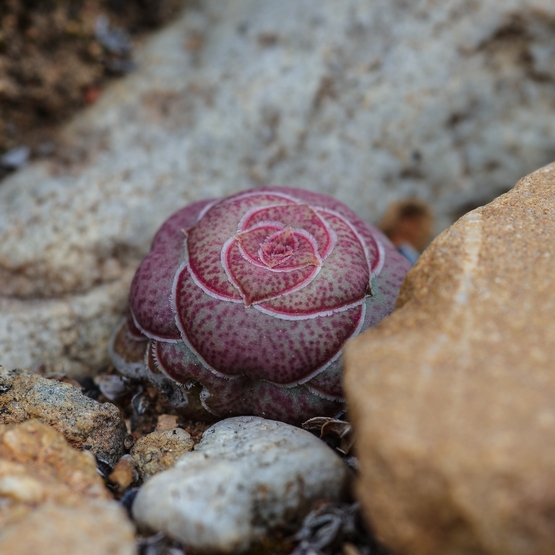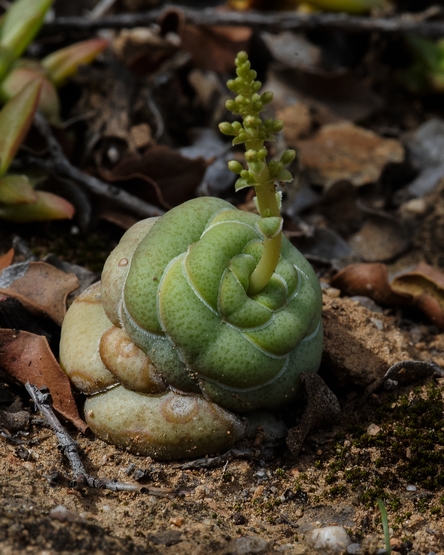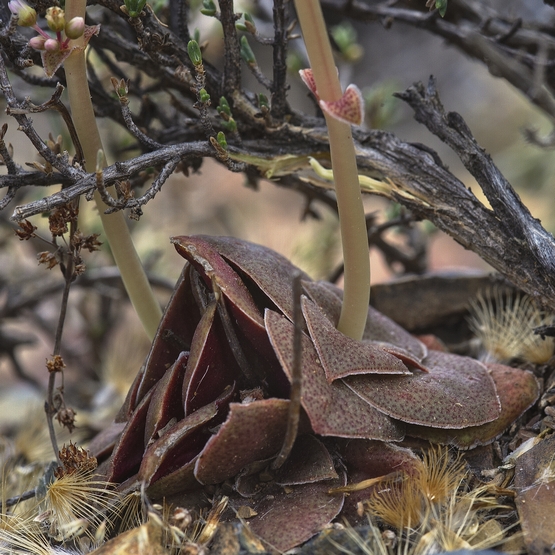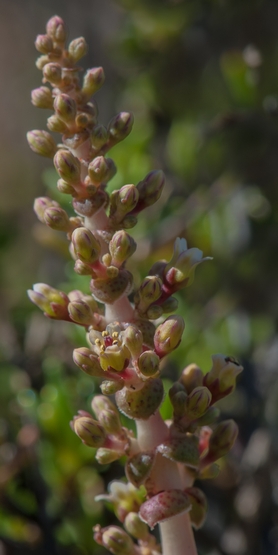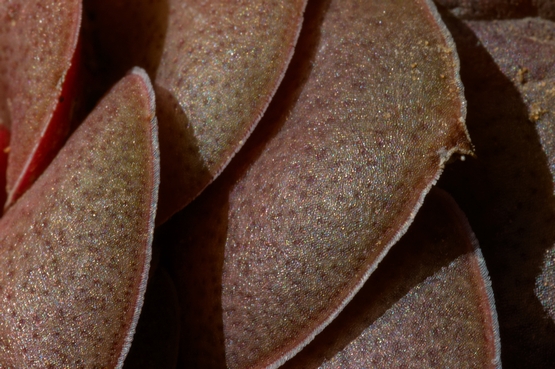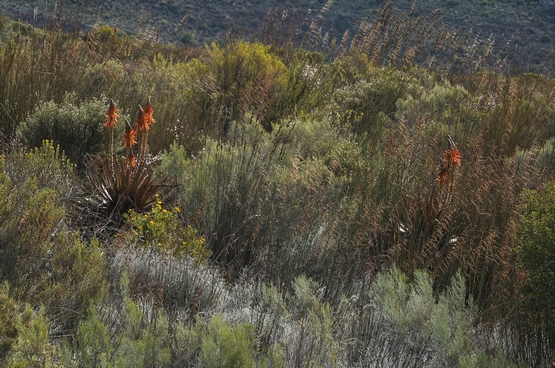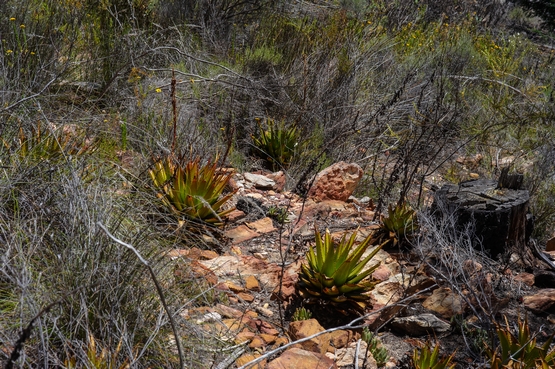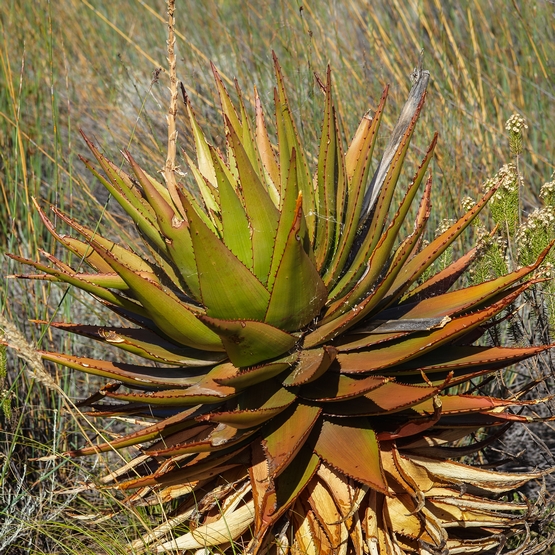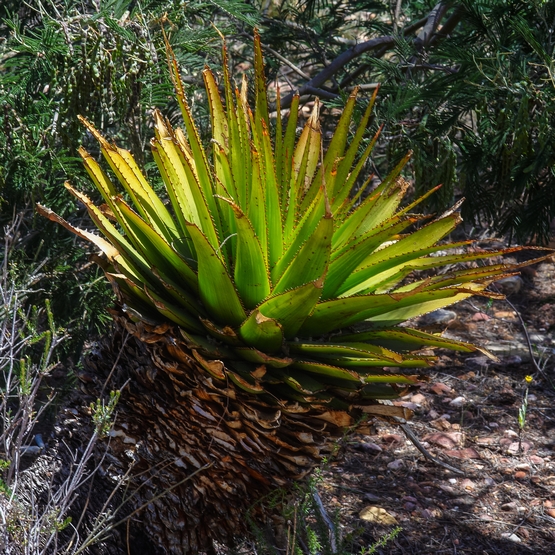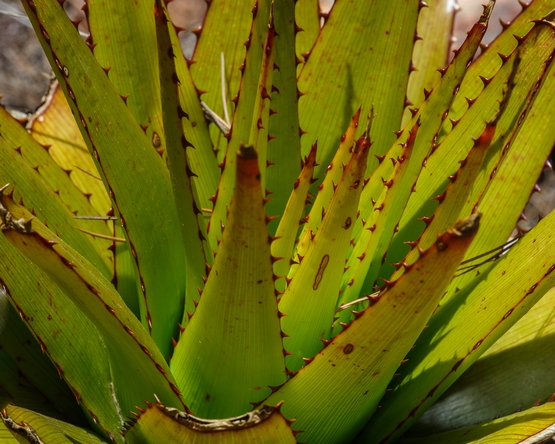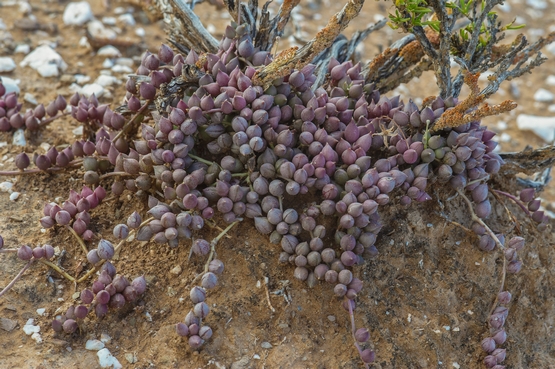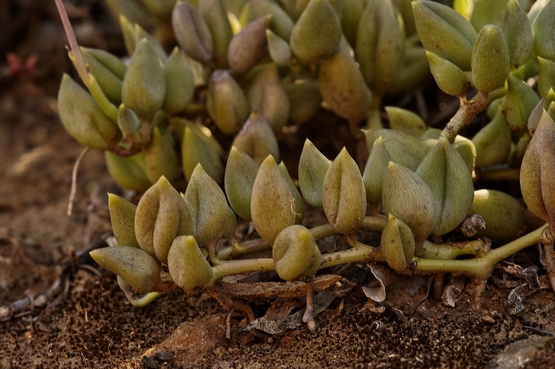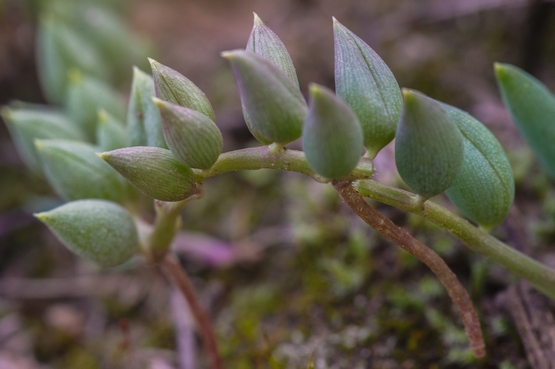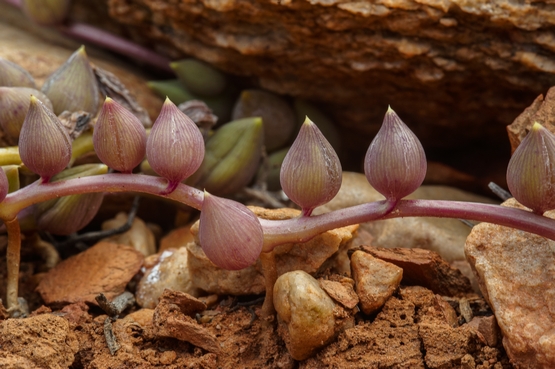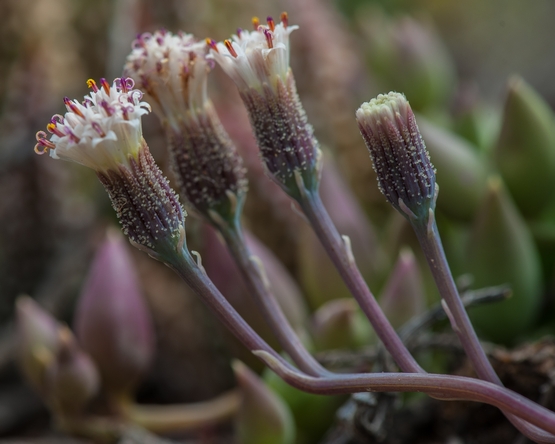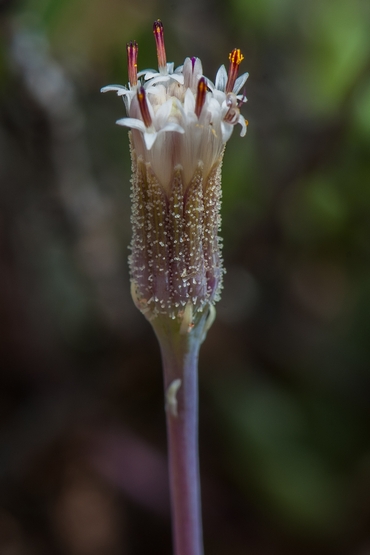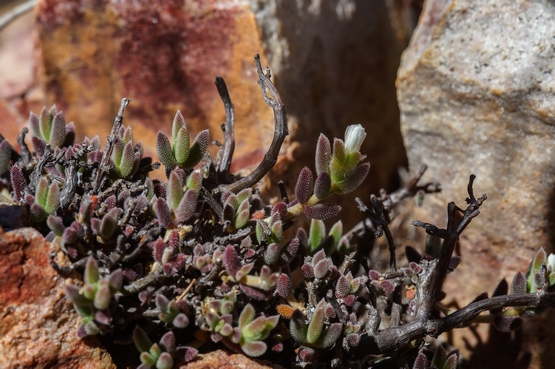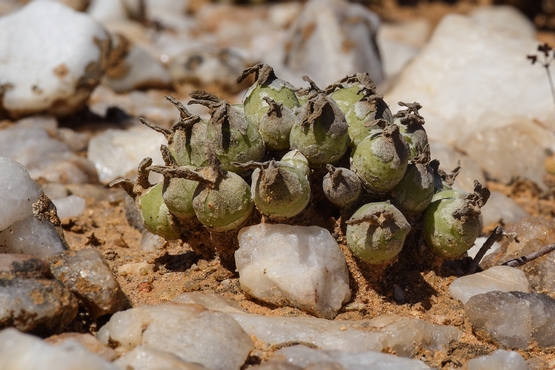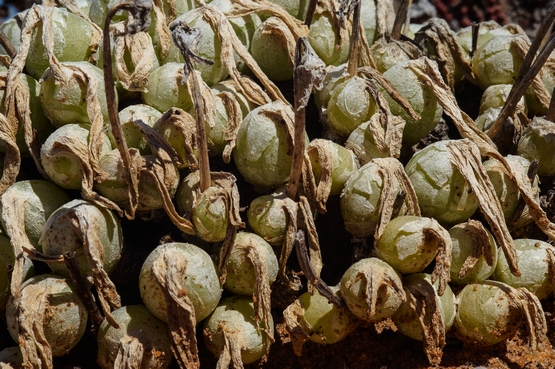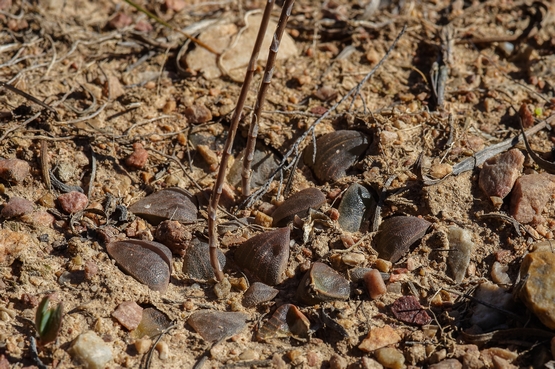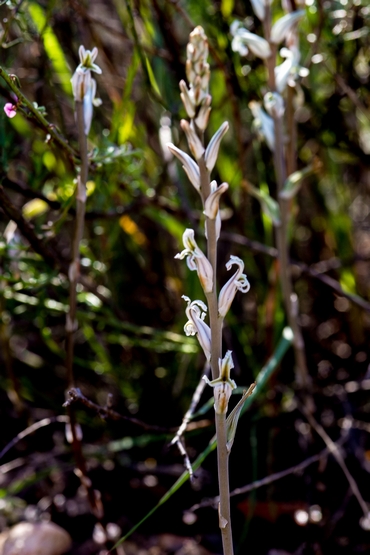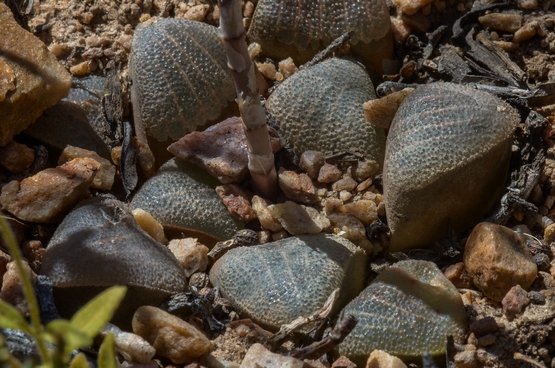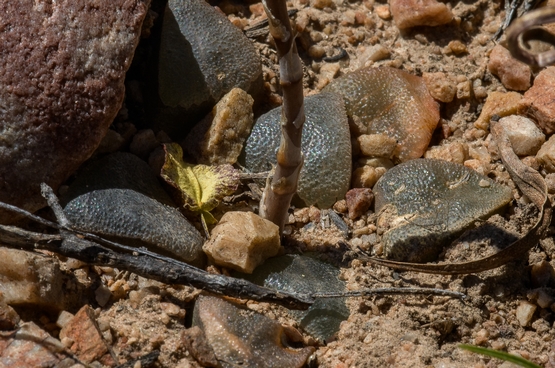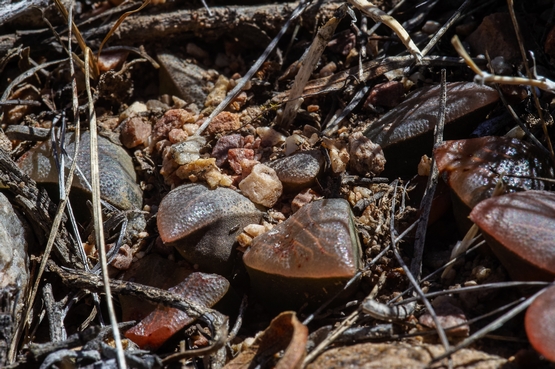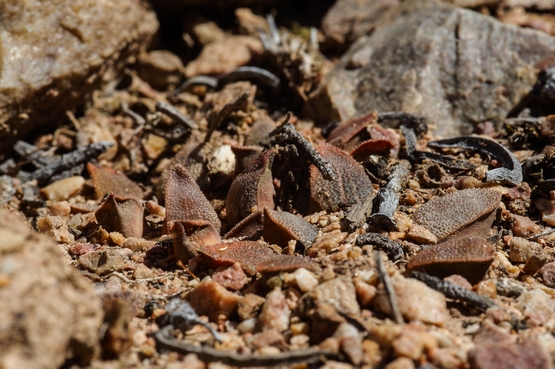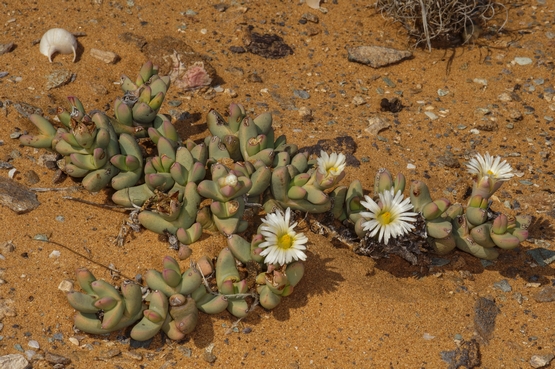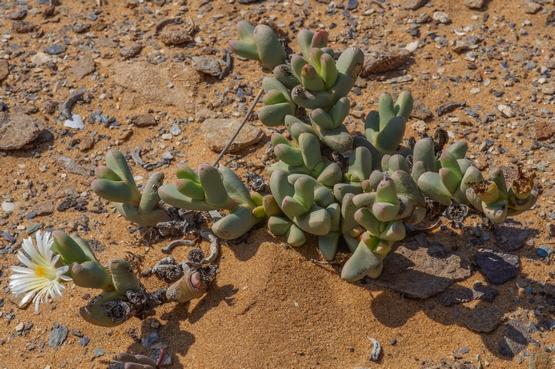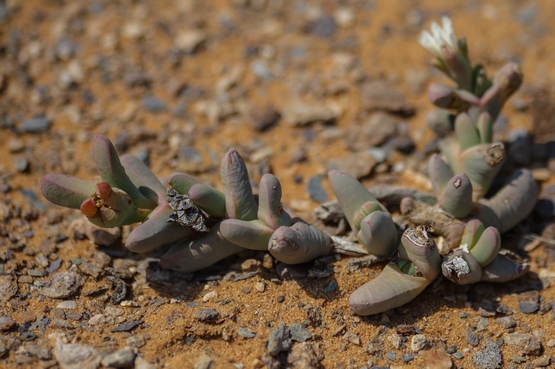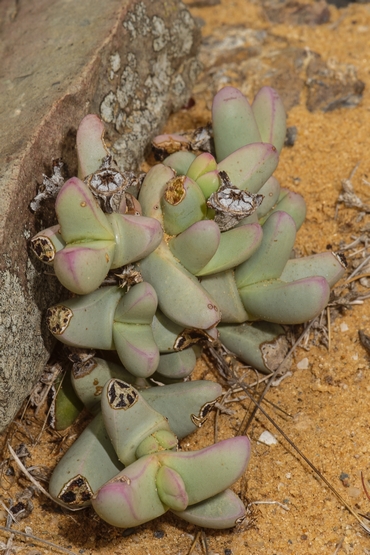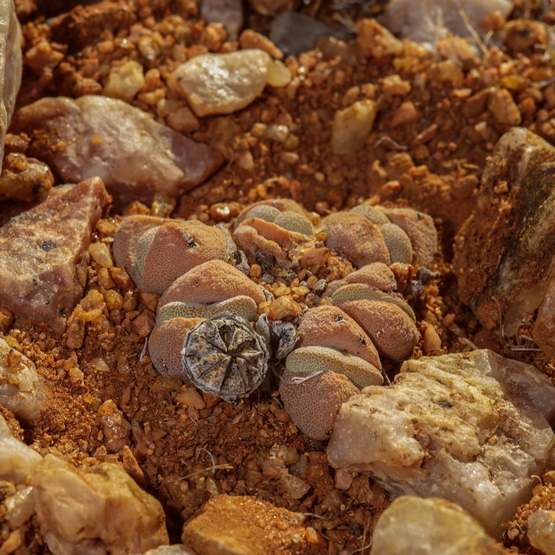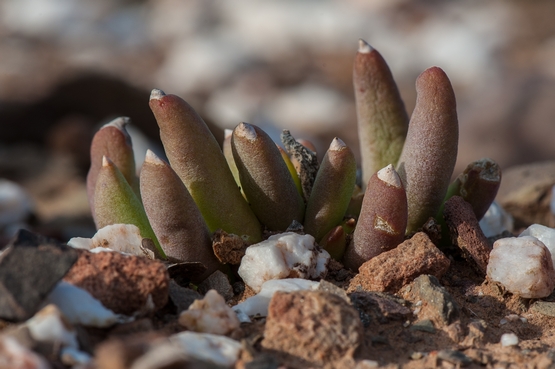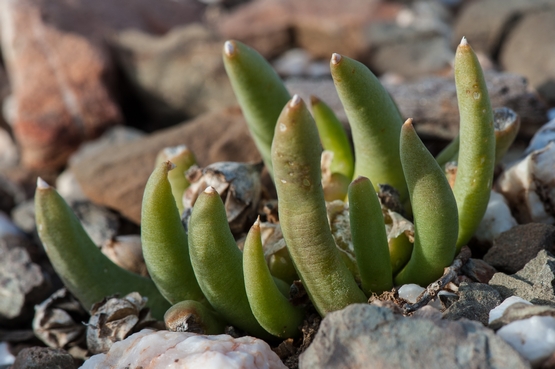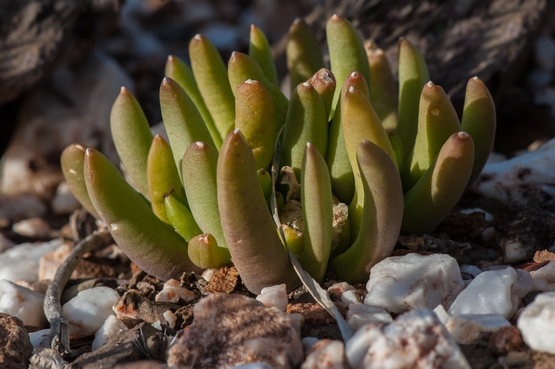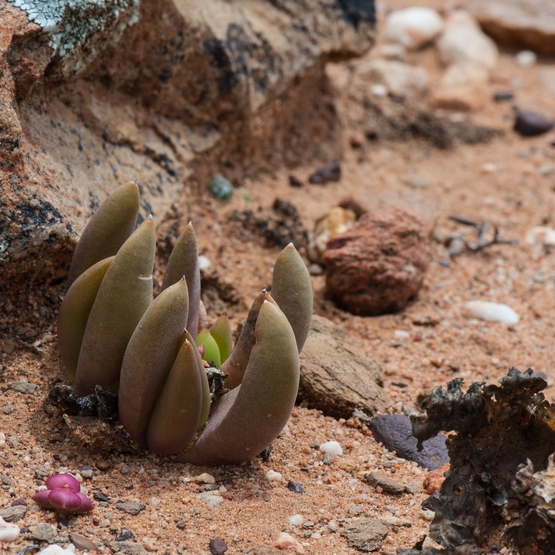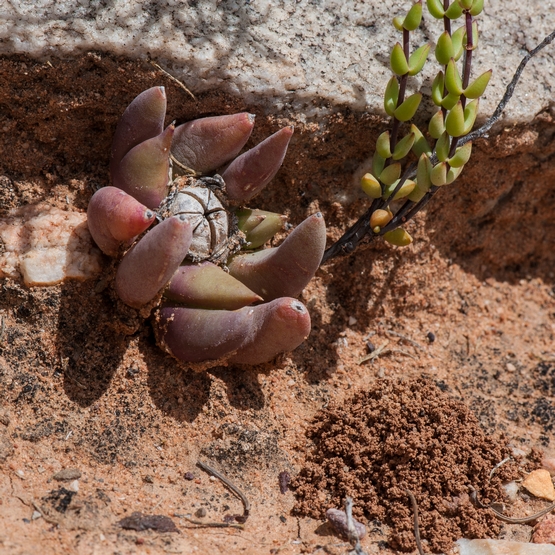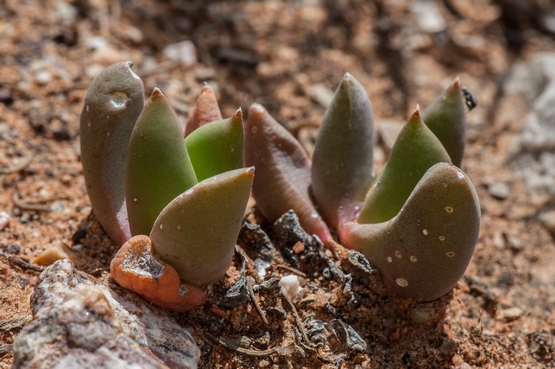These dwarfs are found from the Kamiesberg in Namaqualand to near Willowmore, usually growing under small shrubs.
Author: Frans Noltee
Aloe lineata v. muirii
Whereas in v. lineata the leaves are bluish-green, in this variety they have a striking yellow-green colour.
The first two pictures were taken in arid fynbos on the Rooiberg plateau near Calitzdorp (24 August 2007).
The next ones were taken in an old pine plantation near Herold (6 and 17 Nov. 2009).
Curio radicans
A well known species in cultivation, but also widely distributed in nature (from southern Namibia to the Eastern Cape).
What is not so well known yet is the genus name Curio which apparently we are now supposed to use. So beware, when the taxonomy police comes round next time, you will need a good excuse if you still use the name Senecio (or even Kleinia) radicans.
Whatever you want to call it, I hope you will enjoy the following pictures.
Trichodiadema attonsum
We often refer to scientific names in biology as Latin names, because most of them are either derived from that language or are latinised from other languages. If that were the case here too, the second part of the name should be attonsa. The name Trichodiadema is however derived from Greek (thrix = hair and diadema = crown) and because diadema is a neuter word, the second part of the name has to be attonsum.
As the name implies, most species of Trichodiadema have a crown of hairs at the top of the leaves. The word attonsum means shaved or pruned and is quite appropriate, because this species lacks the diadema that is so characteristic for most other members of the genus.
According to the literature the species occurs on rocky outcrops, as shown in the first two pictures, taken on the Rooiberg near Calitzdorp (23 Oct. 2009).
The third picture was taken 2 days ago, near the southwestern border of Anysberg Nature Reserve. Although the plant clearly does not grow on an outcrop of any kind, there are quartz pebbles present.
Meyerophytum globosum
When I saw these peculiar plants first (1 April 2012), I was quite surprised, especially because there were so many of them. If it had not been in such a remote area I might even have wondered if someone was trying to make an April-fool of me.
Of the literature at my disposal, only the Illustrated Handbook of Succulent Plants came up with a name and a description. It also told me that the species used to be a member of the genus Monilaria.
The pictures were taken at Riethuis in Namaqualand and show plants in the resting stage. When they are in active growth, the plants look totally different, with much longer leaves (up to 70 mm long instead of at most 17 mm in the resting period). You can see the remains of these long leaves on top of the “globes”
Although the plants occur in a small area only, they form large populations there.
Haworthia bayeri
This beautiful species occurs from near Willowmore to just west of Oudtshoorn.
Unfortunately, the place near De Rust where these pictures were taken is now almost completely stripped of this and other interesting succulents. A result of plain unadulterated greed!
The first four pictures were taken between 18 and 28 Sept., the other two 20 Nov.
Juttadinteria deserticola
Ihlenfeldtia vanzylii
Glottiphyllum fergusoniae (2)
I lied to you yesterday. Not on purpose, but as a result of sloppiness. Sorry, sorry.
I told you I had never before seen Glottiphyllum fergusoniae in the wild, but in the meantime I found out that this is not true. When I published my post yesterday, I did not think too much of it. Actually I had been working on another subject, but that took much more time then I had envisaged, so I decided to follow the easy route and just publish a few recent pictures with little commentary.
Much to my surprise a lot of people apparently liked the post, which in turn prompted me to have another look at the pictures. Then it dawned upon me that I had seen similar plants in late June this year. Because I still lived in Calitzdorp at the time, I came from the east, which fact supposedly prevented me from making the mental connection. Looking at the map it became clear that the two localities involved are only about 40 kms apart. I had ID’ed the June plants as G. surrectum, but in hindsight I did not pay proper attention to the fact that the leaves in that species are distichous (in two opposite rows) rather than decussate (in crossed pairs).
The following pictures show you plants from the eastern locality.
Glottiphyllum fergusoniae (1)
For the first time ever, I came across this species in the wild last week. It was growing along the road leading to the back entrance of the Anysberg Nature Reserve, northeast of Montagu.
The species is only recorded from the Montagu and Swellendam districts, where it grows in crevices in shale and sandstone. It differs from all other Glottiphyllums because of the pointed, upright leaves.
